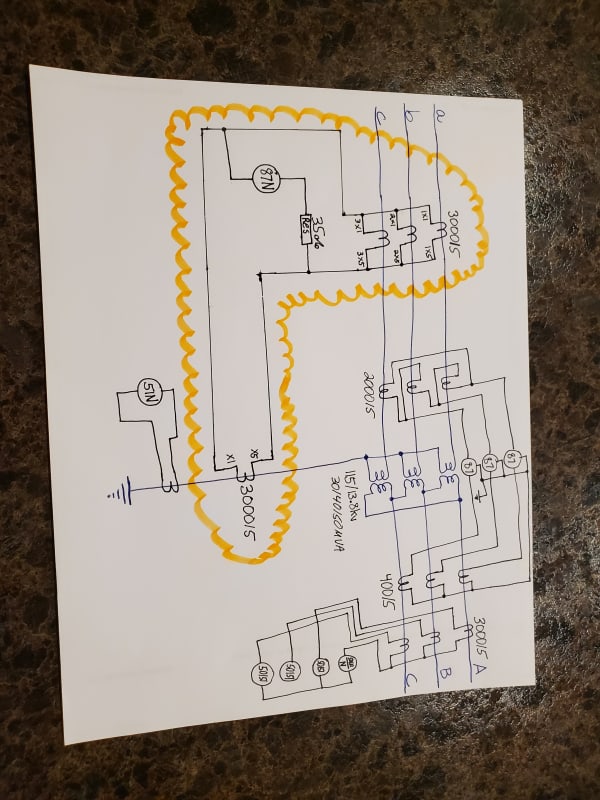Mbrooke
Electrical
- Nov 12, 2012
- 2,546
What is the purpose of the circuit encircled in orange? What is the 35 ohm resistor for? What doesn't the 51N IAC relay on the neutral suffice, transformer differential and primary 50/51? What is this circuit looking to catch?


